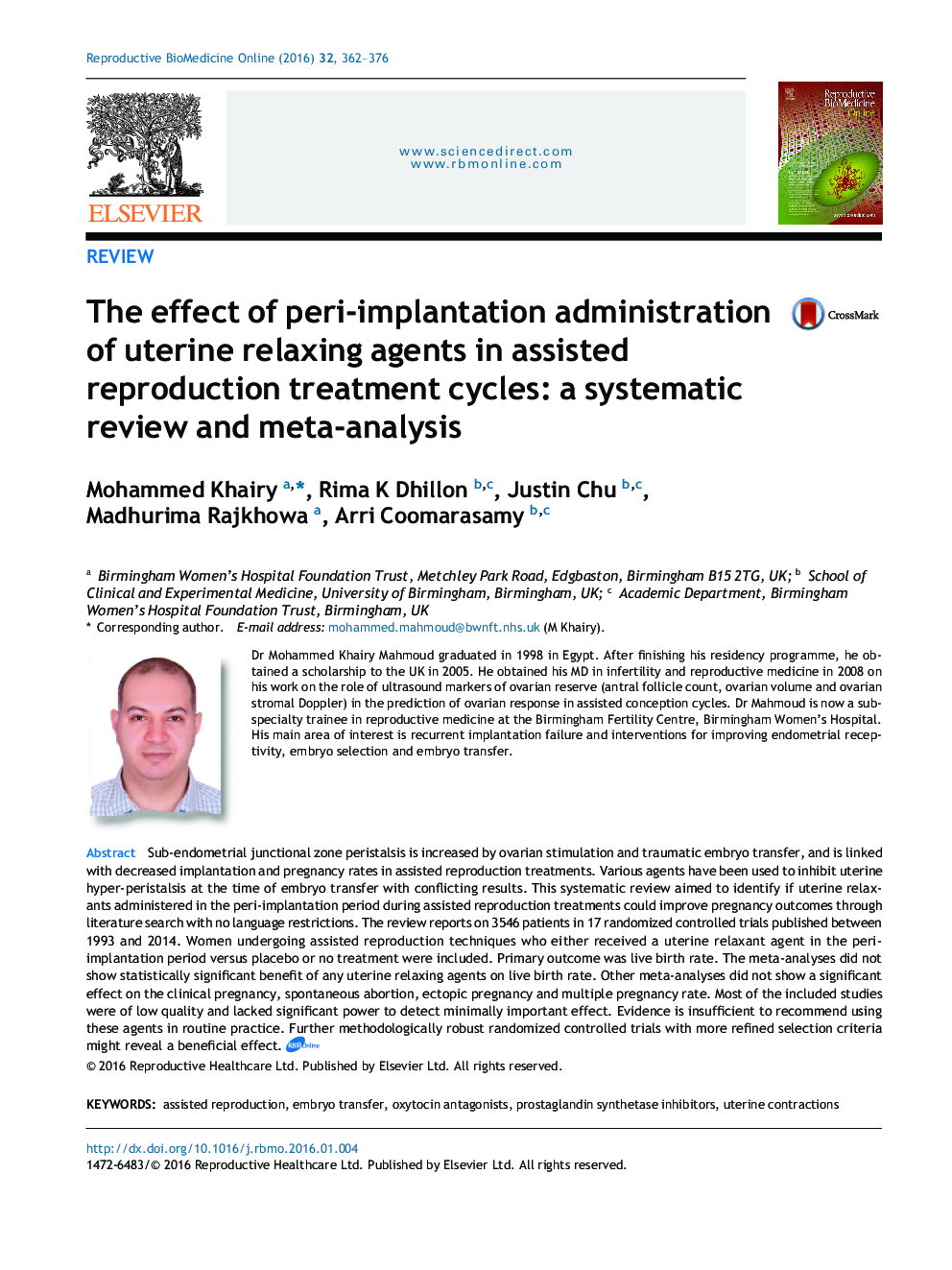| Article ID | Journal | Published Year | Pages | File Type |
|---|---|---|---|---|
| 3969947 | Reproductive BioMedicine Online | 2016 | 15 Pages |
Sub-endometrial junctional zone peristalsis is increased by ovarian stimulation and traumatic embryo transfer, and is linked with decreased implantation and pregnancy rates in assisted reproduction treatments. Various agents have been used to inhibit uterine hyper-peristalsis at the time of embryo transfer with conflicting results. This systematic review aimed to identify if uterine relaxants administered in the peri-implantation period during assisted reproduction treatments could improve pregnancy outcomes through literature search with no language restrictions. The review reports on 3546 patients in 17 randomized controlled trials published between 1993 and 2014. Women undergoing assisted reproduction techniques who either received a uterine relaxant agent in the peri-implantation period versus placebo or no treatment were included. Primary outcome was live birth rate. The meta-analyses did not show statistically significant benefit of any uterine relaxing agents on live birth rate. Other meta-analyses did not show a significant effect on the clinical pregnancy, spontaneous abortion, ectopic pregnancy and multiple pregnancy rate. Most of the included studies were of low quality and lacked significant power to detect minimally important effect. Evidence is insufficient to recommend using these agents in routine practice. Further methodologically robust randomized controlled trials with more refined selection criteria might reveal a beneficial effect.
